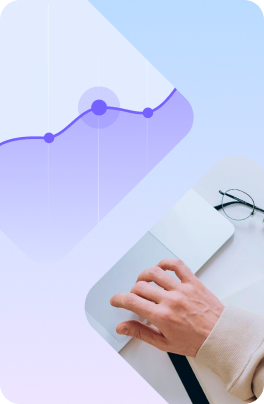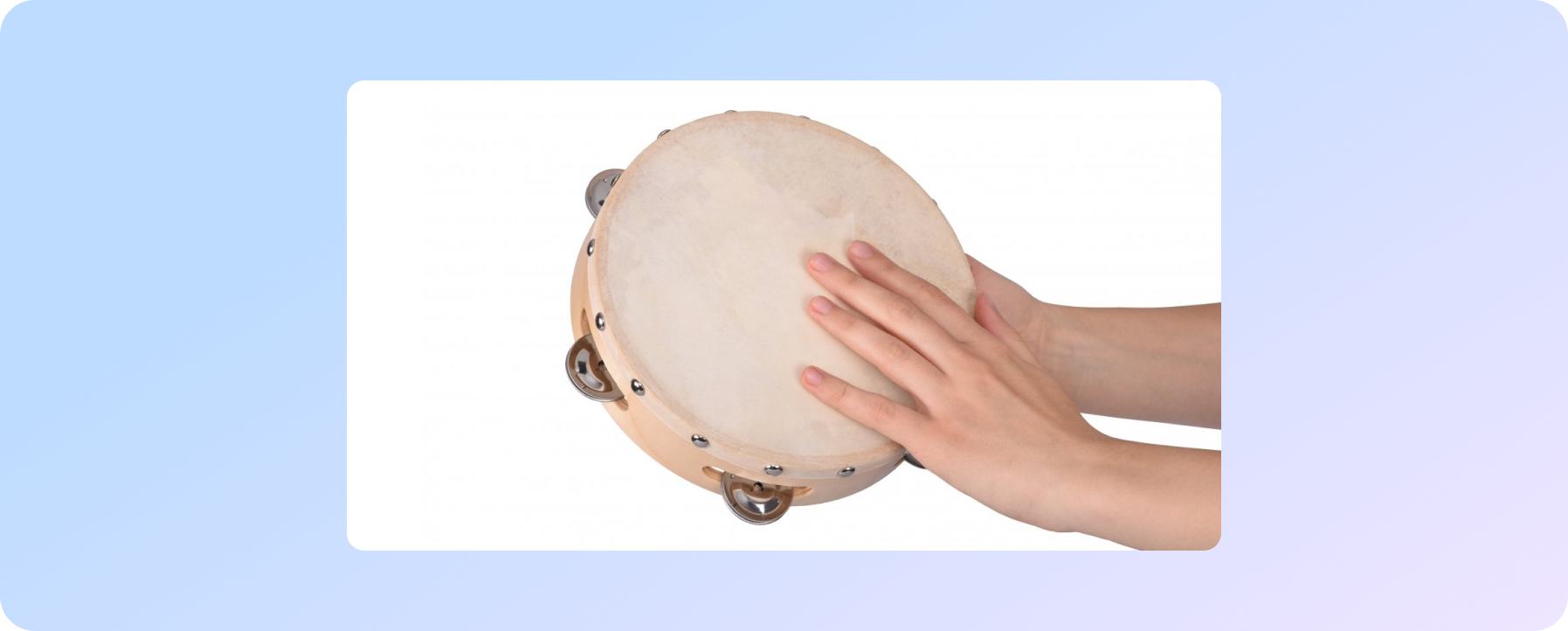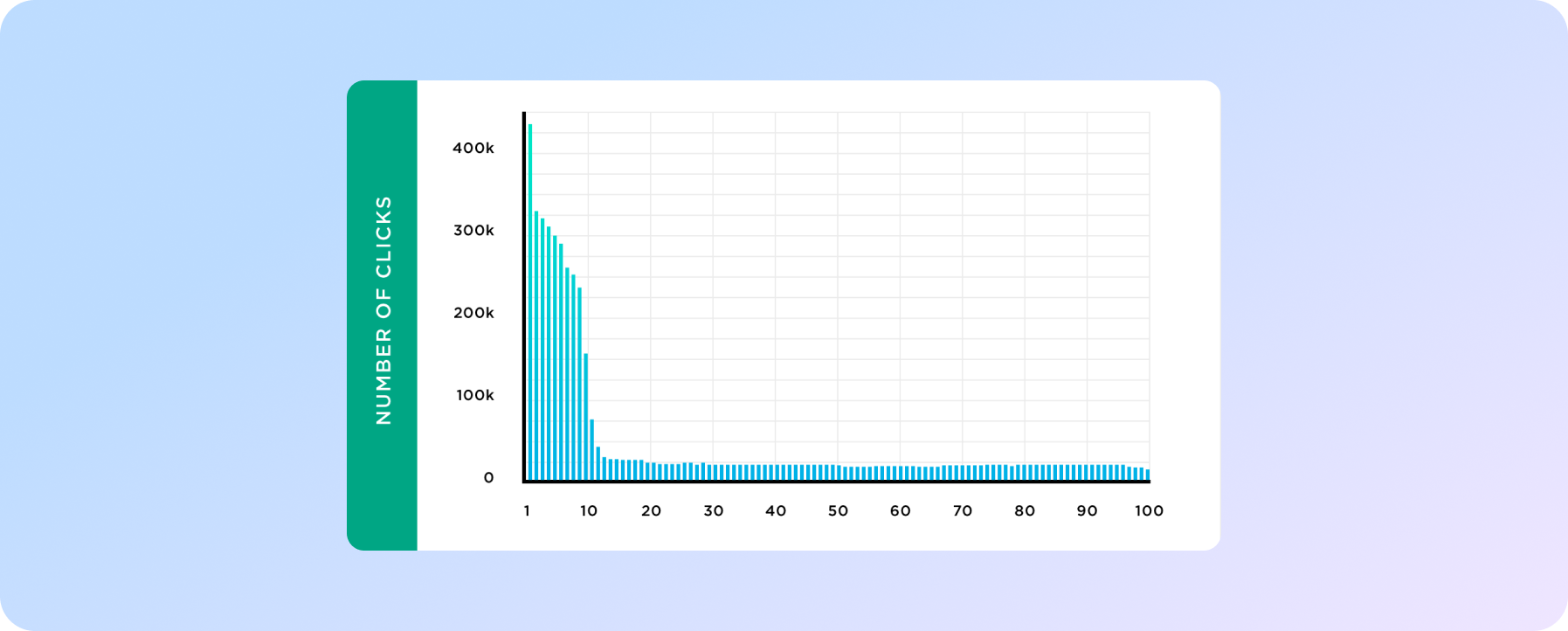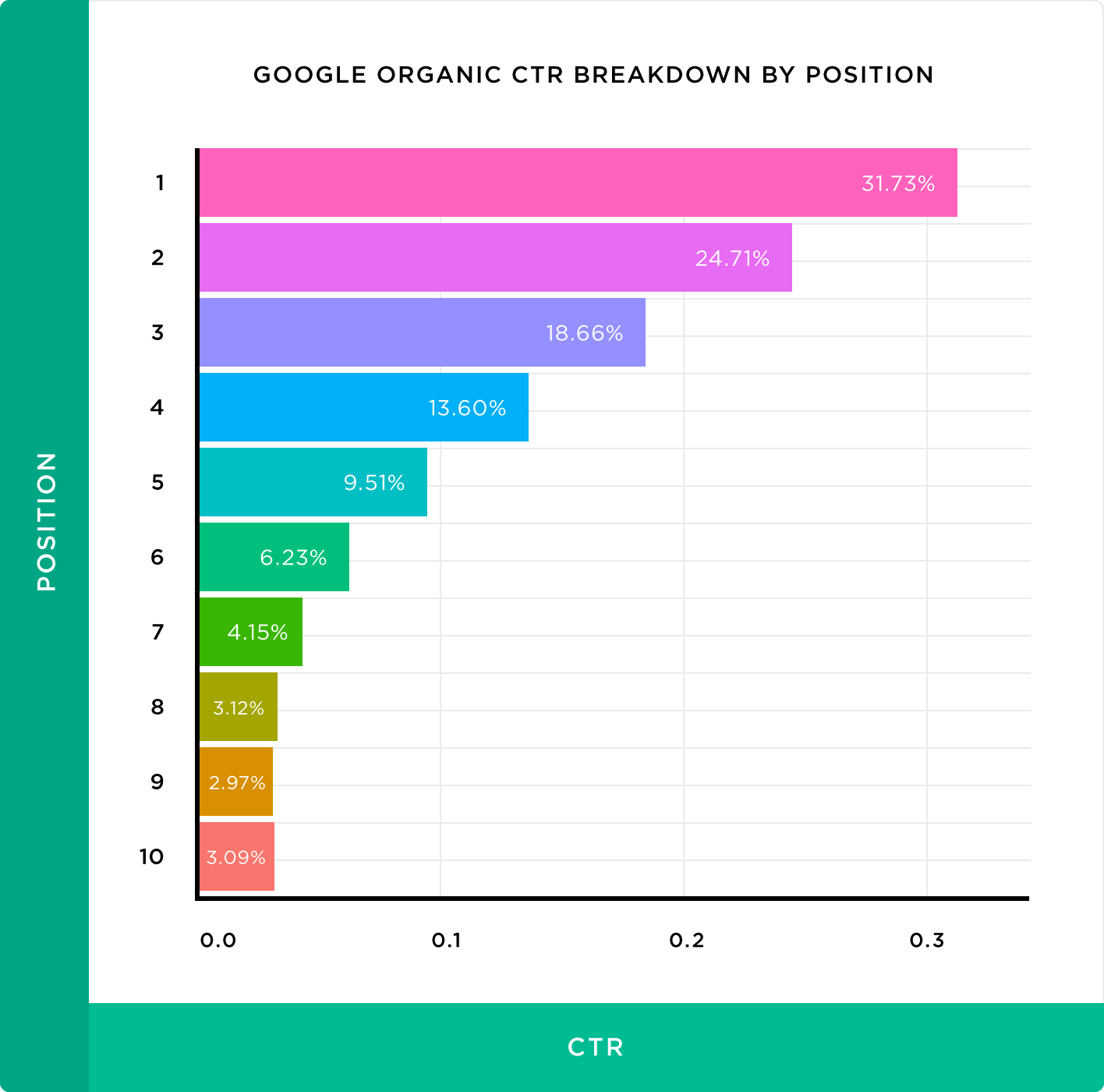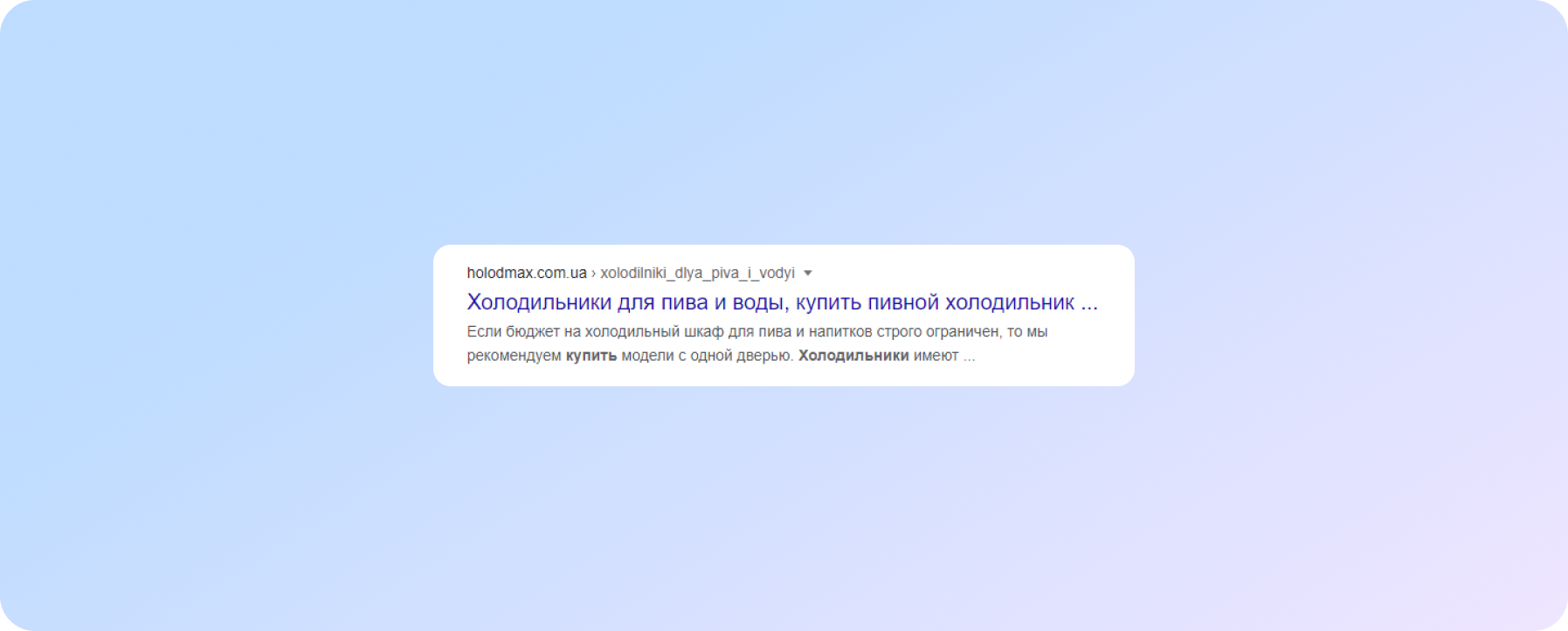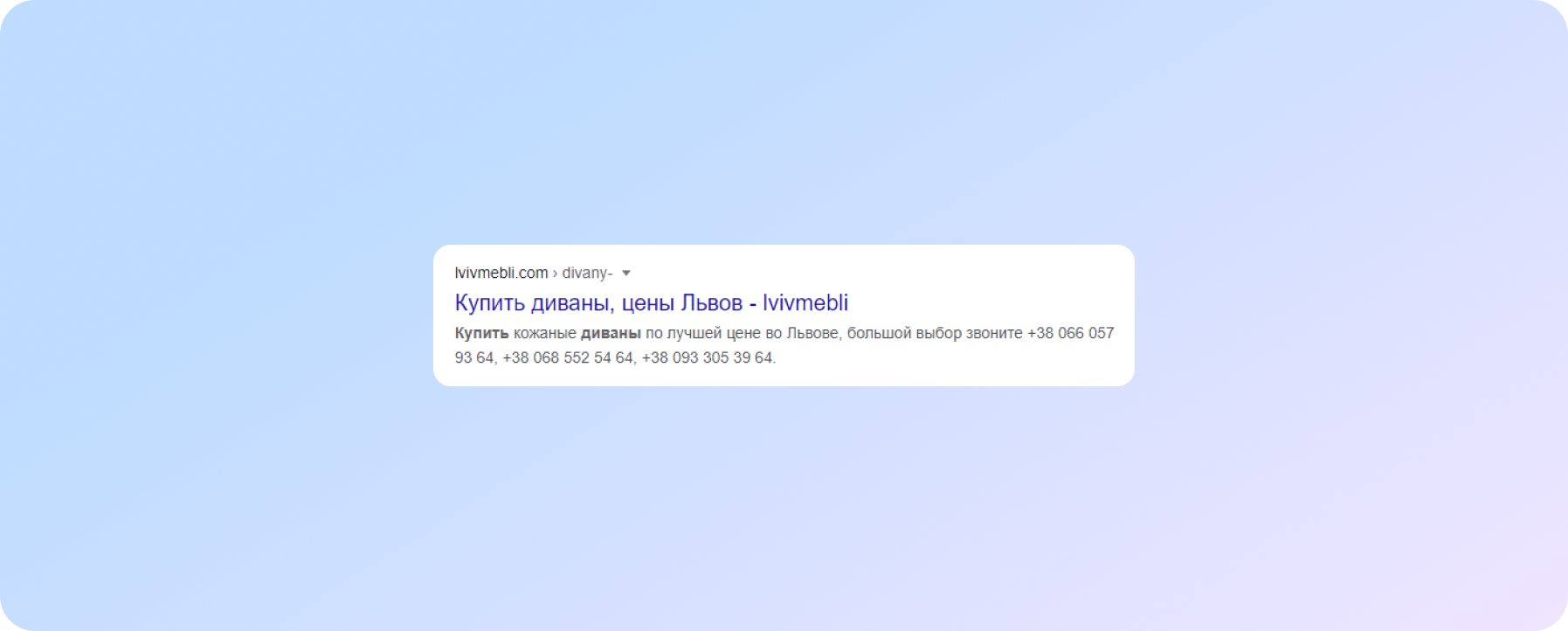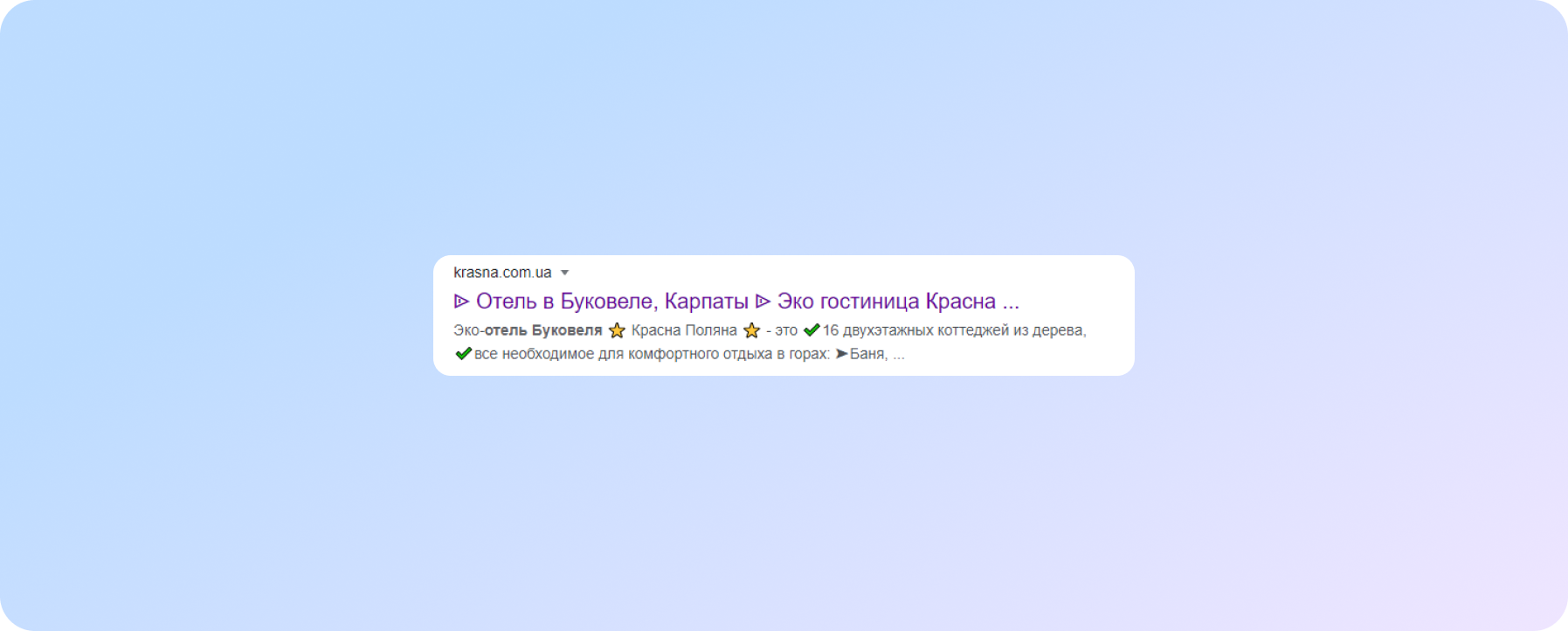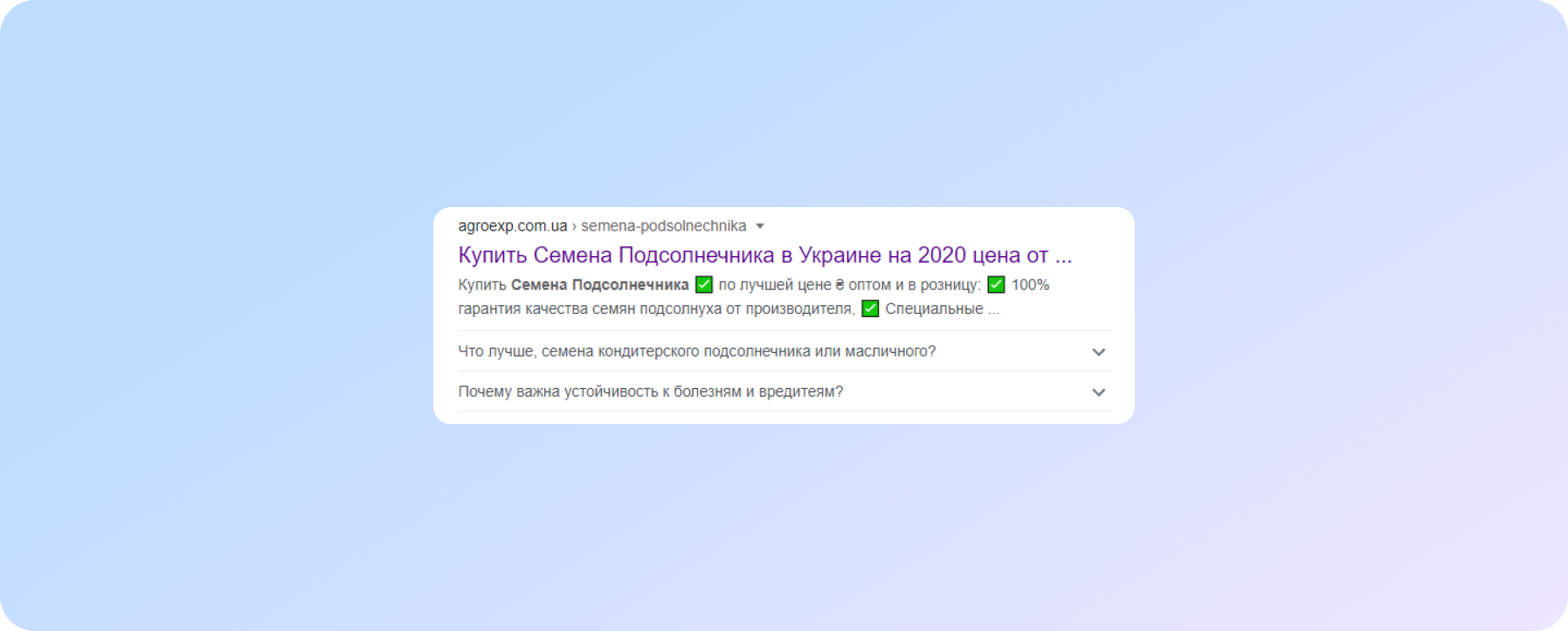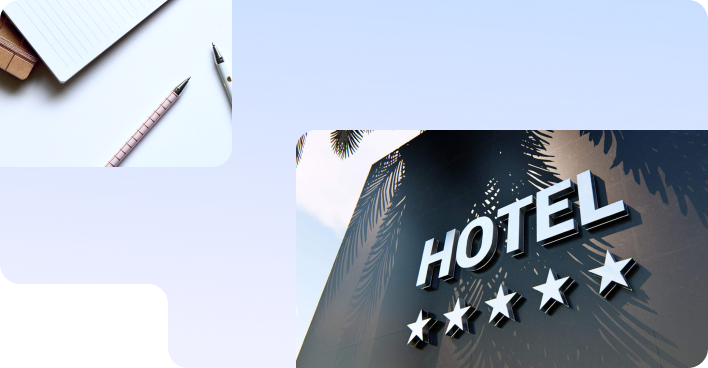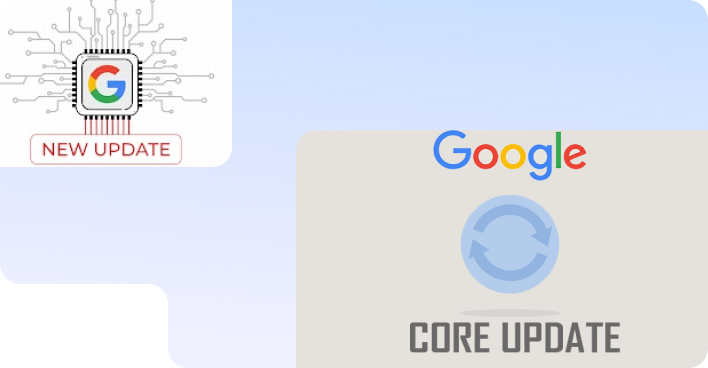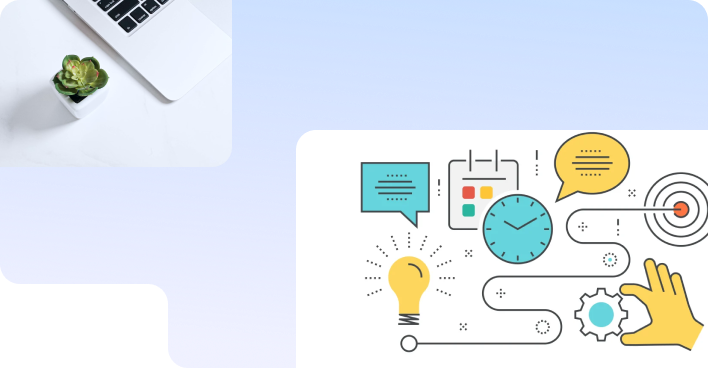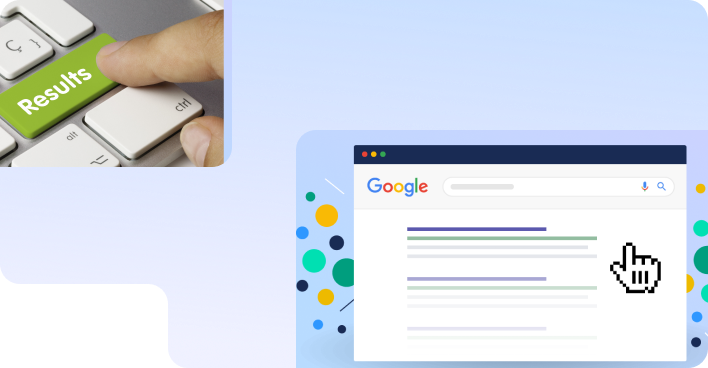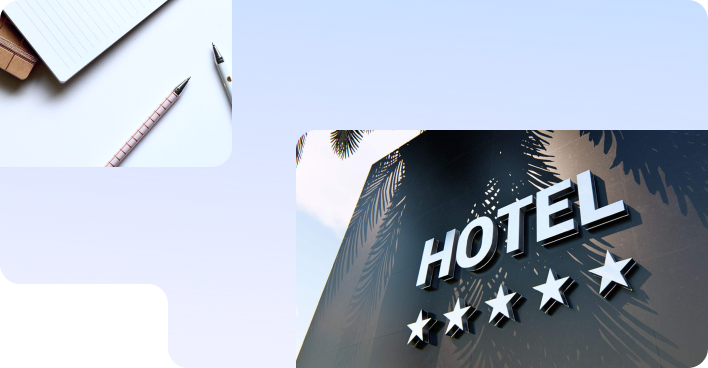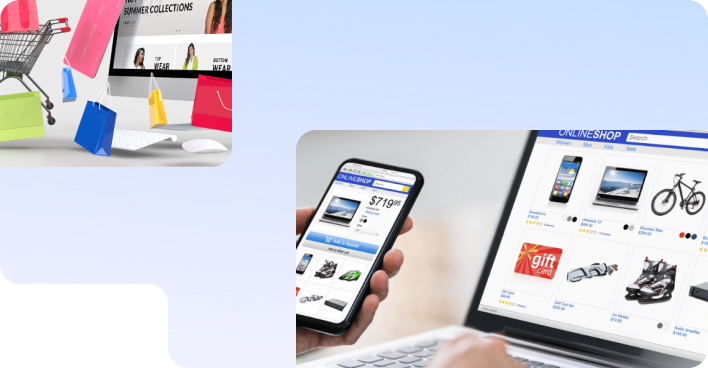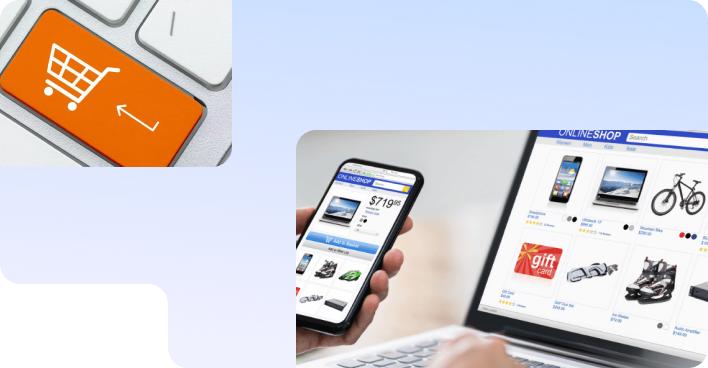No magic - just our painstaking joint work on the site
Seo specialist's challenge: the site is in the top, but the traffic is not growing - what to do?
Everything seems to be fine: we have reached the coveted top, the site is well optimized for queries and is on the first page of search results... But with attendance, everything is not so rosy. What to do?
First of all, calm down and get that cherished SEO tambourine.
Here we go!
TOP 3 is important
Analysts at Backlinko and ClickFlow Finds conducted a CTR analysis of 874,929 search-driven pages to explore the top factors that have a greater impact on organic CTR. The result of the study: the largest amount of organic traffic falls on the sites from the first page of Google search.
The ratio of organic traffic and positions in SERP according to a study in August 2019.
Only about 0.78% of users navigate to search results beyond the second page.
Since the CTR is extremely low starting from the second page, let's focus on the results of the first page.
It seems that our site is shown on the first page, and all users can easily find us. We did our best. What’s next?
But it’s far from over! Just imagine, the first position in Google search results has an average CTR of 31.7%. And the probability of clicking on it is 10 times greater than that of the result in the tenth position. Have you already nervously calculated how much traffic you missed? And then things get even more interesting.
The first 3 search results (TOP 3) in Google account for 75% of all clicks. The lower the position, the less traffic your site receives.
CTR ratio of snippets depending on positions
As you can see, the CTR from the sixth to the tenth position does not differ too much, which means that you should not be satisfied with them.
Did we get the right queries for promotion?
The presence of a semantic core is good and right. But there are a number of issues that should be constantly monitored:
- How long ago was the semantic core assembled?
- Are all collected directions in the core up-to-date?
In order for the semantic core to be effective, before collecting it, an SEO specialist needs to understand the specifics of the niche and the specifics of running a particular business. To begin with, it is important to highlight the basic (main) queries (keys) that correspond to a specific business (which is included in the list of your products and services).
For clarity, let's show in practice. For example, you are promoting a hotel website.
The hotel is located in Bukovel, has its own log cabins, buffet meals, swimming pool, sauna, vats, and family camp.
A semantic core was assembledFor promotion. It includes the clusters "rest in the spring in the Carpathians" and "rest in the autumn in the Carpathians". As it turned out later, the hotel operates only in shifts, like a family camp, in summer and winter. Thus, requests with the words “spring” and “autumn” are not targeted for the project. They should be removed from the list.
In order not to make a mistake with the queries choice , you need to consider the following factors:
- What does a specific business do (nursery, hotel, online store of household appliances, medical clinic, etc.)
- Where does it provide services (city, region, across the country, several countries, etc.)
- Clearly identify ALL areas of the company's activities (for example, plastic windows and doors sale, window fittings sale, plastic windows installation and repair, etc.)
- Select a group of goods or services that bring maximum profit.
- Take into account all the features of the business (is a manufacturer, sells wholesale or retail, etc.).
Important!!! We use only queries that fully characterize your business.
And only after finding out all the features of the project, we proceed to the collection of semantics.
Relevant search results
Have you ever checked which page is shown for the query entered in the search bar? Come on, check it out quickly. If it is the one that was chosen as the target page and meets the user's intent, then you are the happy owner of a properly optimized site. What if not? By not satisfying the intent (goal) of users, you can increase the bounce rate, which will adversely affect the site.
НFor example, for the query “buy a refrigerator”, the type of refrigerator is displayed, but the user intent consists precisely in the search for a household refrigerator for the home.
Incorrect results for the request "buy a refrigerator"
Don't panic, we'll figure it all out.
First of all, check the type of page that is displayed for the specified request (product page, another category, or an information page in general). If a product page is displayed, then, according to the search engine, it is better optimized or more relevant. Therefore, a number of actions need to be taken:
- Check if the optimization of the parent page is correct (whether the keys are used in the title and description tags, whether the headings, images and text on the page are optimized).
- Whether there is a relink for the specified page. If there’s not, this page needs at least 10-15 external links. For a site with a large number of pages, internal linking should be done more "strongly", with a large number of referring pages.
But what if another product or another category is shown? So let's check:
- Where exactly on the page the query is and in what occurrence (direct or diluted).
- Check if there are any other queries from the specified cluster on this page.
- Do not forget about relinking (maybe pages with a query from the promoted cluster link to this page).
Fix these and track the result.
By the way, we will always help you to check if you are unable to handle it yourself. However, if traffic is low in your opinion, let's check what's wrong.
The attractiveness of snippets and CTR (how to become more visible in the SERP) to increase click-through
Help your site to be more attractive in the SERP and stand out from the competition.
Example of a regular snippet
Emoji snippet example
And here is what the expanded snippet looks like
For this you can use:
- meta tags must be unique for each page and fully describe its content;
- the most high-frequency requests should be placed at the beginning of meta tags;
- title and description tags must be different from each other;
- in the description, you also need to use queries that did not fit into the title and briefly describe your competitive advantages;
- emoji to dilute the text and place the main accents;
- microdata (rating, question/answer, etc.).
Let’s agree that the last two options attract more attention.
But micromarking is not a magic pill. In addition to it and emoji, you need to monitor the relevance of the information in the snippet and see if there is any repulsive information for the user. For example, the price is indicated, and it is much higher than the average on the market.
Looking at the bounce rate
Good positions are, of course, a reason for joy. But you still need to analyze the data obtained on the basis of user behavior. There is always work for a SEO specialist :). Analyze how convenient your resource is for the end user, how quickly he finds the information he needs, how structured it is, how much time he spends on the site, etc.
Each site has literally 3-5 seconds to make a first impression. It is during this time that the user decides whether to stay or leave.
Do not forget that the bounce rate for each topic is different. For example, for a taxi site, bounce rates will be high. The user only needs to know the phone number, especially if he is searching from a mobile phone. On business card sites and blogs, the user quickly finds the answer to concerning questions and just as quickly leaves the site. For them, the bounce rate can be 60-70% according to Google Analytics* (according to Yandex-Metrika** - 10-12%). It's quite normal. The bounce rate for an online store should be at the level of 30-40% according to Google Analytics (according to Yandex-Metrica - the same 12%).
Reference:
- A bounce in Google Analytics* is a session in which a user visits only one page and then leaves the site.
- A bounce in Yandex-Metrica** is a session when a user spends less than 15 seconds on the site, does not go further than one page, and does not interact with the site.
The most important point that we often encounter in our work is how “adequately” the site is displayed on mobile devices.
Algorithm for working with a high bounce rate:
- Which pages have the highest bounce rate?
- What queries do users come to the site for?
- What is the query frequency?
- What types of devices have more bounce?
- Analyze what users of the site have problems with.
- Look for ways to solve this problem.
Brand you trust
Even if you are quite high in the search results, but competitors have a more recognizable brand, then it “plays for itself”. In this unequal battle, you will be defeated in terms of traffic.
Important!!! Don't neglect brand building.
Branding will help you:
- increase brand awareness;
- increase sales and profits;
- build a loyal customer base;
- attract additional attention and traffic;
- Promote new products and services faster.
But even if you are still losing, you can compete with competitors: offer the best service, lower price, more loyalty. Brands can sin by processing orders for a long time, sending them in 3-4 days. And a less famous brand can use this in its favor.
What other queries can be added
The success of your business depends, among other things, on your flexibility: how quickly you catch trends and demand, improve a product or create a new one, offer new in-demand services. The same goes for promotion.
Promotion is a display of the customer's business state. Therefore, once every six months or a year, it is necessary to review the semantic core, remove irrelevant areas from promotion and add clusters for new areas of activity or products.
We at SPRAVA agency always establish communication with the business owner (our customer) and try to constantly stay up to date with all changes in order to promptly display them in promotion.
So let's recap:
- Being in the TOP-3 is really important, since the first 3 positions account for 75% of all traffic on request.
- When collecting the semantic core, we take not only those clusters for which you provide a service or sell a product.
- A single landing page should be returned for the specified group of queries. If a different one is issued, check and adjust the optimization.
- Stand out in the search results among your competitors. Shine bright like a diamond ;)
- The promotion goal is not only sales, but also increasing the audience loyalty level through brand building.
- As soon as you have achieved results, look for new clusters to attract traffic.
Do you have any questions about website promotion? Ask us, we will analyze, find out, advise and promote.
We care about improving your sales :)

